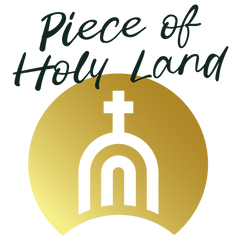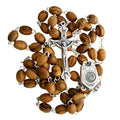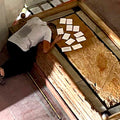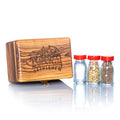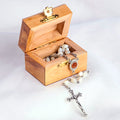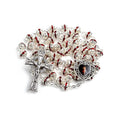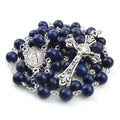Capernaum | The Town of Jesus and the Heart of His Ministry
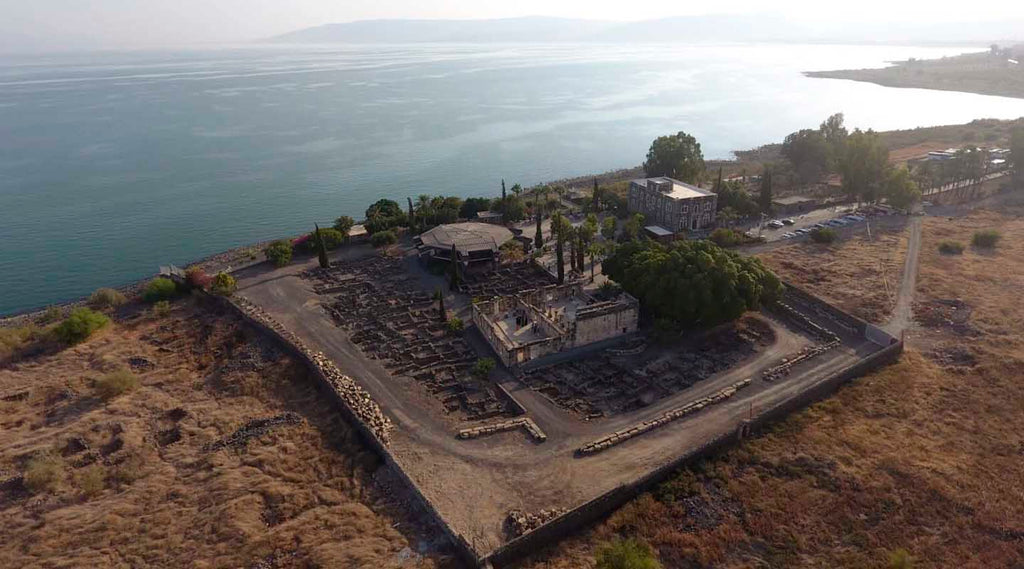
Capernaum – New Testament History and Significance
The Town of Jesus
Capernaum or Capharnaum’s Hebrew name, Kfar Naḥum, literally means “village of Nahum” or “village of comfort.” Toponymists note that although the name evokes the Hebrew prophet Nahum, there is no proven connection with him. During the Hellenistic and Roman periods the town grew into a prosperous fishing village with a population of about 1,500. Its position on the Via Maris, the ancient road linking Damascus and Egypt, made it a commercial hub where caravans and fishermen mingled This road also made Capernaum strategically ideal for spreading the Gospel.
When John the Baptist was arrested, Jesus left Nazareth and “went to live in Capernaum”. Matthew calls it Jesus’ “own city” (Matthew 9:1) because He chose it as His base for the Galilean ministry. Here He called fishermen Peter, Andrew, James and John as well as the tax collector Matthew. The village’s multicultural population, Jews, Romans and Gentiles, provided a diverse audience for His message.
Capernaum - The Town of Jesus

Miracles and Teachings in Capharnaum
As the Gospels unfold, Capharnaum becomes the stage for Jesus’ compassion and authority. In the synagogue He drove out an unclean spirit and the crowd marvelled that “He taught with authority, not like the scribes”. At a centurion’s request He healed a servant from a distance and praised the Gentile soldier’s faith: “I have not found anyone in Israel with such great faith”. In Peter’s house He took Peter’s feverish mother‑in‑law by the hand and she rose and served them. Friends of a paralysed man opened the roof and lowered him into the crowded room; Jesus forgave his sins and restored his limbs, revealing both His divine authority and mercy.
Several of Jesus’ longer discourses were given at Capharnaum. In the synagogue He delivered the Bread of Life sermon, declaring that whoever eats His flesh and drinks His blood has eternal life. Many followers found the teaching hard and left, but Peter confessed, “Lord, to whom shall we go? You have the words of eternal life”. Despite these miracles and teachings, Capernaum largely remained indifferent; Jesus later warned, “And you, Capernaum, will you be lifted to heaven? You will be brought down to Hades”.
Jesus Christ's Synagouge in Capernaum

Archaeology: Synagogue and Peter’s House
Excavations at Capernaum reveal layers of faith set in stone. The White Synagogue visible today is a fourth‑century limestone structure with Corinthian columns and benches. It stands atop a basalt foundation archaeologists believe belonged to the first‑century synagogue where Jesus taught. Unlike the black basalt houses surrounding it, the synagogue’s imported white stone indicates a wealthy Jewish community. In this synagogue Jesus read the Scriptures, healed a demoniac and delivered His bread‑of‑life discourse.
Nearby, a modest basalt house became a locus of early Christian memory. Archaeologists uncovered a simple first‑century dwelling which, around the mid-first century, stopped being used as a residence; its main room was plastered and the household pottery replaced by storage jars and oil lamps. Graffiti scratched into the walls, including prayers such as “Lord Jesus Christ help thy servant”, suggest that local believers revered this space. By the fifth century a large octagonal church was constructed directly above the room. Today a modern church hovers over the site with a glass floor revealing the ancient walls. This house‑turned‑church is traditionally identified as Peter’s home, where Jesus lodged and healed Peter’s mother‑in‑law and the paralyzed man. For Christians, it illustrates how domestic space became sacred by Christ’s presence.
Peter's House in Capernaum

History Across the Ages
Capernaum’s story spans centuries. It may have existed as early as the Hellenistic era and certainly flourished under the Hasmoneans. During the Roman period it thrived as a fishing and trading center; Josephus mentions staying there after falling from his horse. In the Byzantine era Christians built churches over Peter’s house and maintained the Capernaum Synagogue. Early Byzantine sources note that Jews and Christians lived side by side in the village.
Capernaum survived the Arab conquest; records are sparse but archaeology indicates a continued, though diminished, settlement during the early Islamic period. Crusaders had little presence here, and under the Mamluks and Ottomans the town faded. Rediscovered in the 19th century, it became an archaeological park and pilgrimage site. The nearby Sea of Galilee Boat also known as Jesus Boat, an ancient fishing vessel discovered in 1986, offers tangible insight into the maritime life of Jesus’ disciples.
Jesus Boat, The Ancient Galilee Boat

The Message of Capernaum
Though absent from the Old Testament, Capernaum rises to prominence in the New Testament as the heart of Jesus’ Galilean ministry. From this humble fishing town, He called fishermen and even a tax collector to follow Him. He taught in its synagogue, performed healings, forgave sins, and revealed His authority. Capernaum shows how God often works through ordinary places and people, yet also how hearts can choose either to welcome or to reject Him.
The ruins remind us that hearing His words without repentance brings judgment. At the same time, the stories of faith, the centurion, the friends who lowered the paralytic, the household that became a church, show how ordinary people responded with trust and hospitality.
For Christians today, placing a small cross in the home recalls the faith of Capernaum’s first believers. A handcrafted Olive Wood Cross made in the Galilee mirrors the materials used in first‑century houses. A “God Bless Our Home” Cross invokes the blessing of the household church at Peter’s house. Even the name “Capernaum” – derived from Nahum, meaning comfort, resonates with Comfort Crosses. Holding a comfort cross during prayer can make the message of Jesus’ healing at Capernaum personal and immediate.
Pilgrimage and Modern Capernaum
Today the site of Kfar Naḥum attracts thousands of pilgrims. They sit on the ancient synagogue’s stone benches, peer through the glass floor into Peter’s house, and walk the shoreline where Jesus called fishermen. Nearby stand a Franciscan monastery and a Greek Orthodox church, reflecting centuries of care by different Christian communities. Visitors often combine Capernaum with the Mount of Beatitudes, Tabgha and Bethsaida. Those unable to travel can still connect: reading the Gospels alongside archaeological reports, meditating with a Holy Land cross or comfort cross, or using holy water drawn from nearby Nazareth or the River Jordan.
Frequently Asked Questions about Capernaum
Q: Why is Capernaum called the “Town of Jesus”?
Capernaum earned this title because Jesus made it His base after leaving Nazareth. Matthew calls it “His own city”. Here He taught regularly in the synagogue and performed miracles such as healing a centurion’s servant. Several of His disciples—including Peter, Andrew, James, John and Matthew, were called from Capernaum or the surrounding region. The town therefore became central to the early spread of His message.
Q: What miracles did Jesus perform in Capernaum?
In Capernaum Jesus healed the centurion’s servant, praising the Gentile soldier’s great faith. He cured Peter’s mother‑in‑law of a fever and restored a paralyzed man lowered through the roof. In the synagogue He drove out a demon and later raised Jairus’ daughter from the dead. Each miracle underscored His authority and compassion, making Capernaum a witness to His power.
Q: What and where is the synagogue of Capernaum?
The synagogue visible today is a fourth‑century limestone building with Corinthian columns and benches. Archaeologists believe its basalt foundation belongs to the first‑century synagogue where Jesus preached and healed. The structure sits within the archaeological park on the northwest shore of the Sea of Galilee. Its stark white stone contrasts with the surrounding black basalt houses, hinting at the wealth of the local Jewish community.
Q: What is the House of Peter and why is it important?
Archaeologists uncovered a first‑century basalt house that later stopped being used as a residence; its main room was plastered and graffiti prayers were scratched into the walls. By the fifth century a large octagonal church was built over this room. Tradition identifies the dwelling as the house of St. Peter, where Jesus healed Peter’s mother‑in‑law and perhaps lodged during His ministry. The site illustrates how ordinary homes became places of early Christian worship.
Q: How does Capernaum’s history span different eras?
Capernaum existed in the Hellenistic era and prospered during the Hasmonean and Roman periods. It continued under the Byzantines, who built churches over Peter’s house. The town persisted after the Arab conquest, though on a smaller scale. It declined under the Crusaders, Mamluks and Ottomans, and was rediscovered in the 19th century as an archaeological and pilgrimage site.
Q: Why did Jesus rebuke Capernaum?
Despite witnessing many miracles, the inhabitants largely remained indifferent. Jesus declared that if the miracles done in Capernaum had occurred in Sodom, that city would have remained; therefore Capernaum would be brought low. His rebuke serves as a warning against complacency and a call to repentance even when surrounded by signs of God’s presence.
Q: Is Capernaum significant for Jews and Muslims too?
Yes. The synagogue reflects Capernaum’s role as a Jewish village during the Second Temple period, and early Byzantine sources describe Jews and Christians living together there. After the Arab conquest, the town continued albeit diminished. While Jesus is revered as a prophet in Islam, historical records of specific Muslim veneration at Capernaum are limited; nevertheless, the site stands as a shared heritage of Abrahamic faiths.
Q: How can I connect to Capernaum from home?
You can meditate on the Gospel passages set in Capernaum and imagine the scenes at the synagogue or Peter’s house. Holding a Comfort Crosses or placing an Olive Wood Cross in your home recalls the faith of Capernaum’s first believers. Reading archaeological reports and exploring virtual tours of the site brings its stones to life. You might also bless your home with holy water from the Holy Land, remembering Mary’s well in nearby Nazareth and the Jordan River.
Q: Where is Capernaum located and can you visit today?
Capernaum lies on the northwest shore of the Sea of Galilee in northern Israel. It is preserved as an archaeological park with remains of the synagogue, Peter’s house and early Christian churches. Pilgrims and tourists can walk its ancient streets, sit on synagogue benches and view the octagonal church through a glass floor. The site is near other biblical locations such as the Mount of Beatitudes and Tabgha.
Q: What does the name Capernaum mean?
The Hebrew name Kfar Naḥum is often rendered “village of Nahum” or “village of comfort.” Scholars note there is no proven link with the prophet Nahum. In Christian reflection the name’s association with comfort resonates with Jesus’ healing miracles and with devotional items like Comfort Crosses. The name underscores that even a humble fishing village can become a place of consolation and encounter with God.
SHARE:

